Most people consider Mimosa Pudica a pesky weed with sharp thorns that prick your feet as you pass. In contrast, others collect it as an entertaining ornamental.
However, there is so much more to this plant!
Mimosa Pudica is a creeping, leguminous plant native to the Caribbean and the Americas but is now grown internationally. It is well-known for its unique defense mechanism of folding its leaves when touched. It is primarily used for its medicinal benefits and soil regenerative properties.
This article will explore some of the intriguing characteristics, uses, and benefits of this humble plant, including some that are often overlooked.
Let’s dive in!
What Does Mimosa Pudica Look Like?
Mimosa Pudica is a member of the Fabaceae plant family. It is a tropical, perennial plant native to the Americas but grown annually in other regions.
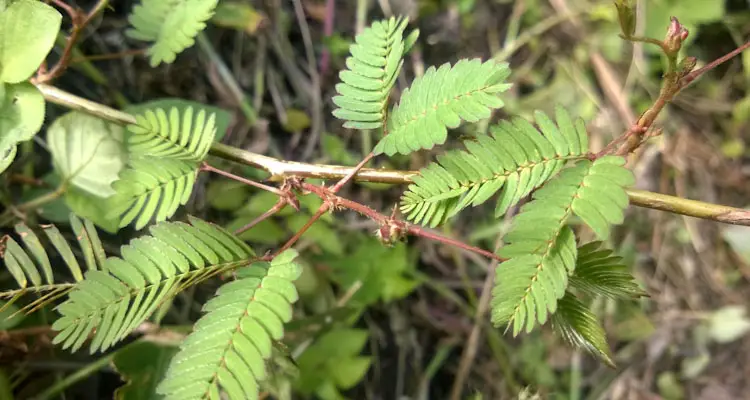
Mimosa Pudica has tiny, green compound leaves of multiple leaflets joined by thin woody, thorn-covered branches. It produces green pine cone-like buds that blossom into lilac flower puffs. The plant has clusters of spike-covered seed pods, which split open as they dry.
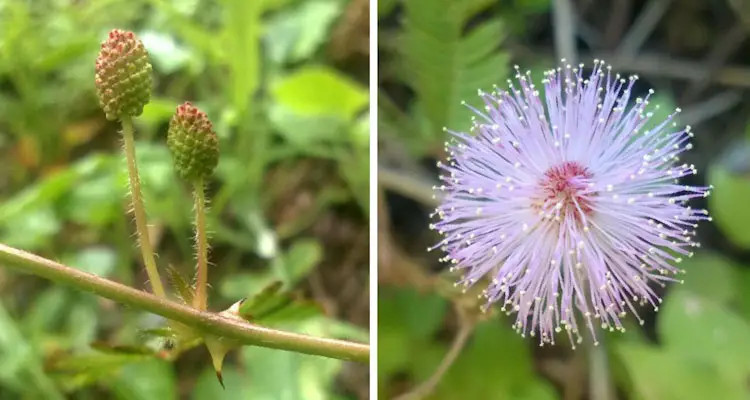
It is a creeping plant that forms a ground cover as it grows. Still, its leaves resemble Leucaena Leucocephala, a much larger plant within the same mimosoid group.
What Are Some Common Names For Mimosa Pudica?
Mimosa Pudica, loosely translated from Latin, means “mimic shyness .”It describes the bashful, animal-like reaction of the plant closing its leaves when touched.
Due to this unique characteristic, it has many other descriptive names in various languages and dialects.
Here are some common names for Mimosa Pudica, some of which are country-specific while others transcend borders. Name Country/Language Mimosa Pudica Scientific Name Shame plant, Shy Plant, Touch Me Not, Sensitive Grass, Sensitive Plant, Common Name (English) Sleeping Beauty, Manhunt Picar, Marihunt Grenada Humble Plant, Mimosa, Honteuse, Shamebush, Shame Lady, Shame Weed, Vergonzosa, Live And Die Australia Tuitui, Vao Fefe, La’au Fefe, Samoa Betguen Sosa Guam Pua Hilahila Hawaii Lazza Bati Bangladesh Thothae Jegri, Lajjavathi, Lajjalu, Chuimui, Lajouni, India Tuntokasvi, Touch Me Not Finland Togop-togop Malaysia, Sabah Ngandrongandro, Cogadrogadro Fiji Tita Pikika‘a Cook Islands Sensitiva Spanish Dormilona Mexico
Mimosa Pudica is native to the tropical regions of the Americas but grows in many other parts of the world where, in some cases, it is classified as invasive.
What Happens When You Touch Mimosa Pudica?
Mimosa Pudica intrigues just about anyone who encounters it with its almost animal-like response.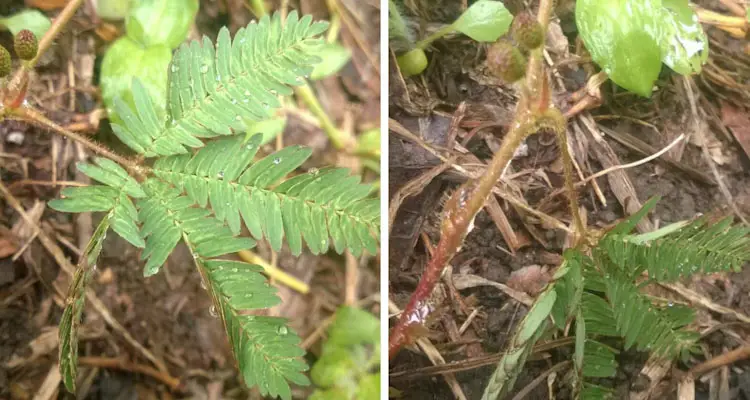
The leaves of the Mimosa Pudica plant fold in a fan-like motion when you touch it, and in some instances, the entire branch retracts. This defense mechanism protects the plants from herbivores by exposing the less desirable thorn-covered stems and seed pods.
This unique feature, coupled with beautiful flowers, is partially responsible for its global spread, as many people collect it as an ornamental.
How To Grow Mimosa Pudica From Seed?
Mimosa Pudica produces a spike-covered seed pod, from which you can obtain viable seeds when dried. In the wild, the seeds remain dormant during the dry season and activate during the cooler rainy season.
To grow Mimosa Pudica from seeds, first, soak seeds in water overnight, then place them into the growing medium. Keep the seeds cool and moist until they germinate. Usually, this takes between 1 to 3 weeks. Water seedlings when necessary but remember the roots will rot if medium becomes waterlogged.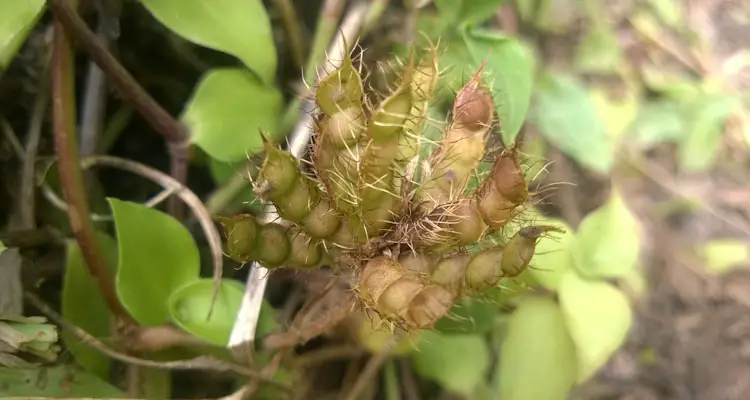
Mimosa Pudica is not too picky about growing conditions. It can grow in poor soil and even improve the quality of the ground over time.
Ideally, it prefers sunny areas with well-drained soil but will tolerate partial shade and even dry spells. However, it struggles in compact, soggy soils.
You can use the paper tissue method to pre-germinate the seeds to grow Mimosa Pudica as a houseplant.
- Place seeds onto a paper tissue and into a plastic container.
- Moisten seeds and tissue with water, then cover.
- Store the container in a cool area until the seed sprouts.
- Fill the desired pot with moistened potting mix.
- Place sprouted seeds into the mix, about ⅛ inch deep. Then cover with soil and press gently.
- Move the pot to a sunny location. The seedling should break the surface within a few days.
- Water when necessary; from below if possible. Allow the soil to partially dry out between watering.
Mimosa is a perennial plant in the wild but usually grows as an annual plant in containers. Remember to manage the seeds properly when grown indoors due to the plant’s invasive nature.
What Are The Health Benefits Of Mimosa Pudica?
Traditionally, many people used Mimosa Pudica to treat a range of ailments from insomnia to erectile dysfunction. Surprisingly, studies proved merit to some of these claims.
Mimosa Pudica aids in digestion, eliminating parasites, treating respiratory illnesses, depression, menstrual and urinary issues. It contains mimosine, a possible anti-cancer compound; tannin, a stimulant; fatty acids, alkaloids, flavonoids, and many other compounds, which vary within the plant.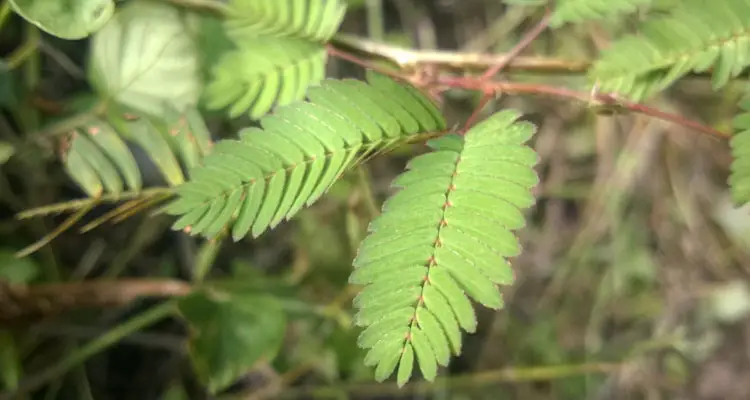
Mimosa Pudica and its extracts rarely have severe side effects when used as directed with medicinal Ayurvedic treatments, the most common being constipation.
However, due to its anti-fertility properties, it is not recommended for pregnant women, those trying to get pregnant, or breastfeeding.
Please seek medical advice before using Mimosa Pudica for medicinal purposes, especially if you intend to use it alongside western medicines.
What Are The Uses Of Mimosa Pudica?
Traditionally, Mimosa Pudica was brewed into a tea or crushed into a paste to treat indigestion, minor cuts, or other ailments.
It is well-known for its medicinal benefits in some countries but is treated as a weed by most. However, it is again gaining popularity due to supplements made from its extracts.
Here are some common uses of Mimosa Pudica:
1. Soil Regeneration And Erosion Control
Many people overlook that Mimosa Pudica is a leguminous plant with qualities related to that family.
Mimosa Pudica enhances the nutrient content and structure of the soil. It is a nitrogen-fixing plant, which draws nitrogen from the atmosphere, making it available to plants. It protects the soil from erosion by forming a network of roots below the surface and entangles leaves and branches above.
In many cases, Mimosa Pudica serves as an indicator of poor or bacterial dominant soils, two conditions in which it thrives.
2. Traditional And Folkloric Medicinal Treatments
It is undeniable that Mimosa Pudica contains compounds that possess possible pharmaceutical applications. However, these are not yet commonly used in Modern Medicines.
Traditionally, Mimosa Pudica tea was consumed as a mild sedative to induce sleep or calm anxiety. Extracts of the plant were used to treat menstrual and urinary issues. It was ground into a paste then applied to minor cuts and bites. Some people chewed the roots to relieve pain or as an aphrodisiac.
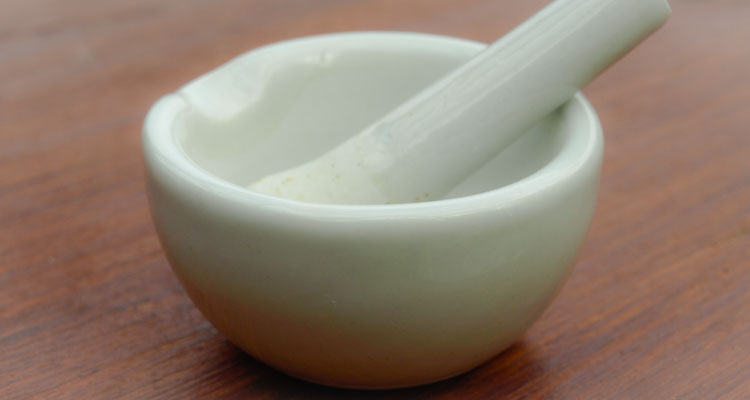
There are many other claims of possible medicinal uses for the plant; some seem likely, but have not yet been thoroughly investigated.
While many people swear by the effectiveness of these remedies, it is always advised to seek professional guidance.
3. Ornamental And Entertainment
Mimosa Pudica is an exciting plant, to say the least. While it has medicinal benefits, its spread was due to curiosity.
Mimosa Pudica is collected and grown as a houseplant mainly due to its unique touch-sensitive characteristics. It produces beautiful lilac flower puffs and spike-covered seed pods. It is easy to grow and maintain, providing viable seeds for continuous propagation.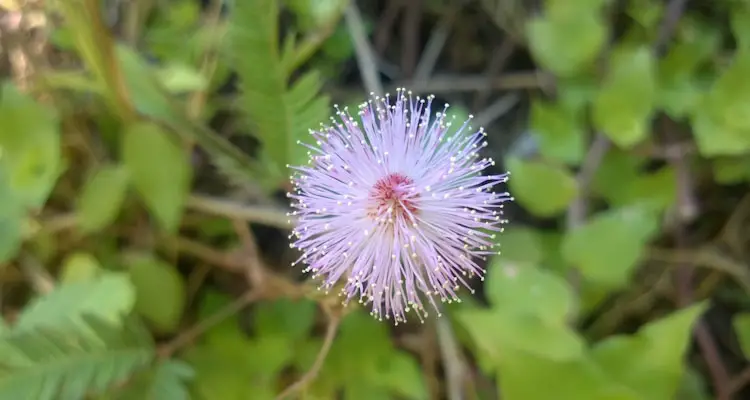
However, it also carries invasive qualities which should not be overlooked. If you choose to grow it as a houseplant, ensure you properly dispose of its plant materials.
Is Mimosa Pudica Poisonous?
Mimosa Pudica is classified as safe for humans and pets. However, there is some mixed information when it comes to certain animals.
Mimosa Pudica Extract contains compounds that, in high concentrations, can cause hair loss in humans and possible death to ruminants. These toxic levels are not typically found in plants. However, some people and animals may have allergic reactions to specific compounds found within the plant.
That being said, if you have a history of allergies, it would be advisable to consult your doctor before using Mimosa Pudica extracts or supplements.
How To Get Rid Of Mimosa Pudica
Mimosa Pudica is on the list of Global Invasive Species., which thrives in less than ideal conditions. It protects itself with its unique movements and hooked thorns as it spreads.
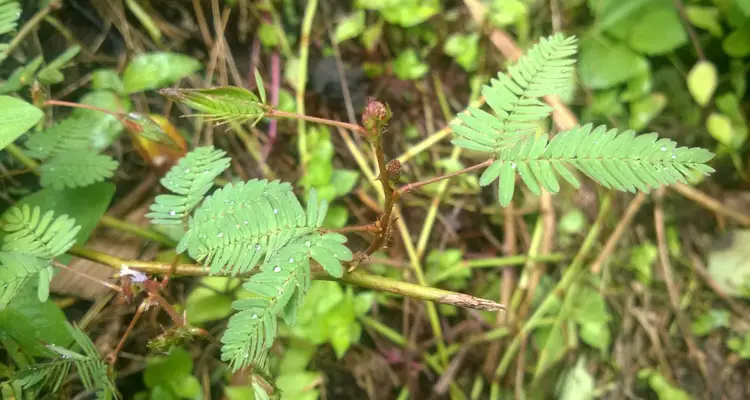
To get rid of Mimosa Pudica, remove young plants before producing seeds. You may do this by uprooting the seedlings individually or using a suitable weedicide, organic or synthetic. Wear appropriate equipment when handling Mimosa Pudica plants to protect yourself from the thorns.
Remember, Mimosa Pudica seeds go dormant during dry spells. You will need to monitor the area over time to identify and remove new plants.
Final Thoughts
Mimosa Pudica is a tropical, perennial flowering plant that has captivated the minds and imagination of people around the world.
It is well-known for its use in traditional and folkloric medicines. It is collected as an ornamental to appease the curiosity of onlookers.
While many of its medicinal claims seem far-fetched at best, science slowly provides possible applications of its extract’s pharmaceutical properties.
However, there have also been mixed reports on possible side effects and allergic reactions.
While it has many benefits, Mimosa Pudica has invasive tendencies and should be managed responsibly.
Related Questions
How Do You Make Mimosa Pudica Tea?
To make Mimosa Pudica tea, place two leaves into a small pot of boiling water. Allow to simmer for 5 minutes, then cover and steep for an additional 5 minutes. Strain the tea into a cup and sip. You can add some honey to taste but avoid sugar if possible.
References
Easy Ayurveda. Touch Me Not Plant: Uses, Side Effects, Research. easyayurveda.com. Accessed February 2022
Avicenna Journal of Phytomedicine. Effects of Mimosa pudica L. leaves extract on anxiety, depression, and memory. ncbi.nlm.nih.gov. Accessed February 2022
Wiley Online Library. Mimosa pudica L., a High-Value Medicinal Plant as a Source of Bioactives for Pharmaceuticals. ift.onlinelibrary.wiley.com. Accessed February 2022
Britannica. Sensitive Plant. britannica.com. Accessed February 2022
Global Invasive Species Database. Mimosa Pudica. incngisd.org. Accessed February 2022
